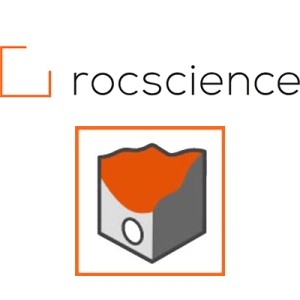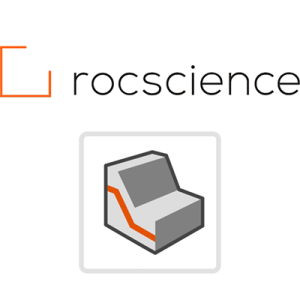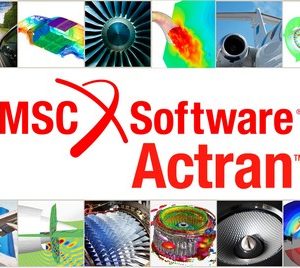PLAXIS 2D Ultimate & PLAXIS 3D Ultimate 2024.3
$ 170.00
PLAXIS 2D Ultimate and PLAXIS 3D Ultimate by Bentley Systems are the most advanced geotechnical finite element analysis (FEA) tools for soil, rock, and structural interaction. Designed for engineers who need precision, they enable fully coupled deformation, consolidation, and dynamic vibration analyses in 2D and 3D environments.
With support for seismic loading, transient groundwater flow, and thermo-hydraulic-mechanical coupling, PLAXIS Ultimate 2024.3 delivers unmatched accuracy for complex projects such as tunnels, embankments, excavations, and foundations.
✅ Latest Version 2024.3 (May 2025 release)
✅ Complete dynamic and time-dependent simulation capabilities
✅ Ideal for advanced geotechnical, civil, and infrastructure analysis
Description
🧱 PLAXIS 2D Ultimate 2024.3 & PLAXIS 3D Ultimate 2024.3 – The Ultimate Geotechnical Analysis Software
PLAXIS 2D Ultimate 2024.3 and PLAXIS 3D Ultimate 2024.3, developed by Bentley Systems under the Seequent brand, represent the most advanced generation of geotechnical finite element analysis (FEA) tools available today.
Designed for professional engineers and researchers, PLAXIS Ultimate provides high-precision analysis of soil, rock, groundwater, and structure interaction, enabling safe and optimized design for infrastructure, mining, tunneling, and energy projects.
With the 2024.3 release (May 2025), Bentley introduces major performance improvements, next-generation design tools, and significant bug fixes, making this the most reliable and feature-rich version ever released.
🌟 Highlights of PLAXIS Ultimate 2024.3
The 2024.3 release brings major updates across both PLAXIS 2D and PLAXIS 3D platforms, focusing on workflow efficiency, accuracy, and interoperability with previous versions.
🔧 Key New Features & Enhancements
1. Seamless Project Conversion
Projects created in any previous PLAXIS release (from 2017 onward) can now be safely converted into the 2024.3 format with the new built-in conversion wizard.
This feature retains all material parameters, construction phases, and geometry while preserving a backup of the original project — preventing data corruption or loss during migration.
2. Design Approaches for 3D (New!)
The long-awaited Design Approaches functionality is now available in PLAXIS 3D.
Engineers can define and manage partial factors for material properties and loads in compliance with Eurocode 7, LRFD, and national annexes — allowing automated design checks directly within the PLAXIS 3D environment.
3. Improved Groundwater Flow Modelling
Groundwater discontinuity elements now correctly block flow when non-porous drainage types are selected.
This ensures higher accuracy for impermeable barriers, retaining structures, and lining interfaces, especially in coupled flow–deformation simulations.
4. New Rock Salt Creep Safety Factor
For geomechanics specialists, PLAXIS introduces a new “Strength Factor” state parameter for the CreepRock N2PC-MCT model.
It provides a direct measure of salt formation stability, critical for underground energy storage, salt cavern, and mining design projects.
5. Offshore & Monopile Modelling Improvements
Modal analysis (previously a Technology Preview) is now a fully released feature in 2024.3.
It allows the analysis of natural frequencies and mode shapes for structures such as offshore wind monopiles, incorporating tapered pile geometries, lumped mass rotor-nacelle assemblies, and soil–structure interaction effects.
This capability is essential for renewable-energy geotechnical design.
6. Dynamic Analysis Upgrades
PLAXIS 2D & 3D Ultimate continue to offer industry-leading dynamic capabilities — now enhanced for earthquake simulation, machine vibration, and traffic-induced stress.
Users can apply time-history or harmonic loads, perform seismic response analyses, and study wave propagation through complex layered soils.
7. Enhanced Scripting Security
Automation workflows are now safer: the remote scripting server only listens to localhost, preventing accidental or malicious access from external hosts.
This improvement benefits users who automate simulations via Python scripting or PLAXIS Remote API.
8. Result Smoothing & Visualization Improvements
The “Use Result Smoothing” toggle now behaves consistently across all result types, ensuring smoother contour plots and clearer visual interpretation of deformation and stress fields.
9. Stability, Solver & Performance Fixes
Solver stability has been improved for large-scale 3D meshes, interface-rich models, and transient coupled analyses.
Internal optimizations reduce memory consumption and increase speed for 3D consolidation and dynamic runs.
⚙️ System Requirements for PLAXIS 2D / 3D Ultimate 2024.3
Before installation, confirm that your workstation meets or exceeds the following specifications.
🖥 Minimum Requirements
-
Operating System: Windows 10 Pro 64-bit or Windows 11 Pro 64-bit
-
Processor: Dual-core 2.0 GHz or faster (x64 architecture)
-
RAM: 4 GB (2D) / 8 GB (3D) minimum
-
GPU: OpenGL 3.3 compatible card with 256 MB VRAM (Intel, NVIDIA, AMD)
-
Storage: 2 GB free for installation, 5 GB+ recommended for project storage
-
Display: 1920×1080 resolution minimum
⚡ Recommended for Professional Users
-
Processor: Intel i7 / AMD Ryzen 7 or higher with strong single-thread performance
-
RAM: 16–32 GB (for complex coupled or 3D dynamic models)
-
GPU: Dedicated NVIDIA GeForce / Quadro or AMD Radeon with ≥1 GB VRAM
-
Storage: SSD (PCIe NVMe recommended) for project directories and TEMP
-
OS & Drivers: Latest Windows updates and GPU drivers for maximum stability
💡 Tip: PLAXIS solvers rely mainly on single-core performance; a fast CPU with high clock speed is more effective than many cores.
🧩 Key Functional Modules Included in the Ultimate Tier
| Functionality | 2D Base | 2D Advanced | 2D Ultimate |
|---|---|---|---|
| Static deformation & stability | ✅ | ✅ | ✅ |
| Steady-state groundwater flow | ✅ | ✅ | ✅ |
| Coupled consolidation (time-dependent) | ❌ | ✅ | ✅ |
| Dynamic vibration / seismic analysis | ❌ | ❌ | ✅ |
| Transient (time-varying) groundwater | ❌ | ❌ | ✅ |
| Thermo-hydraulic-mechanical coupling | ❌ | ❌ | ✅ |
The same tier structure applies for PLAXIS 3D. The Ultimate edition therefore includes all features from the lower levels, plus advanced coupling, seismic, and transient capabilities.
🧰 Bug Fixes and Stability Improvements
-
Conversion stability: Opening legacy projects now generates safe backups to prevent corruption.
-
Result smoothing fix: Visual consistency in Output plots regardless of result type.
-
Mesh calibration fix: Improved geometry import and refinement for CAD/DXF boundaries.
-
Groundwater fix: Non-porous discontinuities now correctly block flow paths.
-
Scripting server security: Now restricted to localhost.
-
Solver optimization: Reduced memory usage for large interface networks and dynamic models.
-
Modal analysis: Transitioned from beta to full release, with improved convergence and modal accuracy.
🔍 Interesting Technical Facts
-
PLAXIS 2024.3 is the first version to be fully aligned with Seequent’s subsurface ecosystem, enabling smoother data exchange with Leapfrog Works and OpenGround Cloud.
-
Users can now perform integrated digital twin workflows, linking geotechnical simulation with geological modeling and monitoring.
-
PLAXIS does not yet support hyper-threading; performance scales best with high-frequency cores, not high core counts.
-
The software uses a finite-element solver with automatic mesh refinement, allowing highly non-linear material behavior simulation while minimizing numerical instability.
-
The new CreepRock MCT model extension makes PLAXIS one of the few commercial tools capable of full-scale rock-salt creep and cavern stability simulation.
🏗️ Why Choose PLAXIS Ultimate 2024.3?
Choose PLAXIS 2D Ultimate or PLAXIS 3D Ultimate when your projects demand the highest level of analytical precision.
These editions are purpose-built for complex geotechnical challenges such as:
-
Seismic design of tunnels, retaining walls, and foundations
-
Time-dependent settlement and consolidation of soft soils
-
Dynamic analysis of traffic and machinery vibrations
-
Offshore wind foundation and monopile simulation
-
Transient groundwater and thermal coupling
-
Long-term creep in salt and rock formations
-
Fully coupled flow–deformation analysis for embankments or excavations
Whether you work in infrastructure, mining, tunneling, offshore energy, or academia, PLAXIS Ultimate 2024.3 provides unmatched power, flexibility, and reliability.
⭐️⭐️⭐️⭐️⭐️
Outstanding Performance and Reliability – Essential Tool for Advanced Geotechnical DesignAs a geotechnical engineer and numerical modeling specialist, I have worked extensively with PLAXIS 2D Ultimate 2024.3 and PLAXIS 3D Ultimate 2024.3, and I can confidently say these are the most comprehensive versions of Bentley’s PLAXIS software to date. The 2024.3 release has dramatically improved both performance and stability, especially when handling large-scale 3D finite element models involving complex soil–structure interaction and dynamic loading.
The new Design Approaches in PLAXIS 3D is a game-changer for those of us working under Eurocode 7 and LRFD standards. Being able to apply partial factors directly inside the 3D environment streamlines the workflow and saves hours of manual post-processing. I also appreciate the upgraded groundwater flow handling and the much-improved project conversion tool, which makes moving older models into the 2024.3 version fast and worry-free.
PLAXIS Ultimate 2024.3 continues to excel in its dynamic and transient coupled analysis capabilities. The thermo-hydraulic-mechanical (THM) coupling performs flawlessly in long-term simulations, and the solver remains robust even for complex consolidation or vibration problems. The visual output is clearer than ever, with smoother contour plots and more intuitive phase result tracking.
From a developer’s perspective, I’m particularly impressed by the improved Python Remote Scripting API. The local-only scripting restriction in 2024.3 adds an important layer of security while maintaining excellent automation flexibility for parametric studies and design optimization.
Overall, PLAXIS 2D Ultimate 2024.3 and PLAXIS 3D Ultimate 2024.3 are reliable, professional-grade tools that deliver both precision and productivity. Whether you’re modeling tunnel excavation, offshore monopiles, or seismic ground response, these platforms provide the confidence and analytical depth needed for today’s demanding geotechnical projects.
Highly recommended – five stars from a developer who uses PLAXIS every day.











